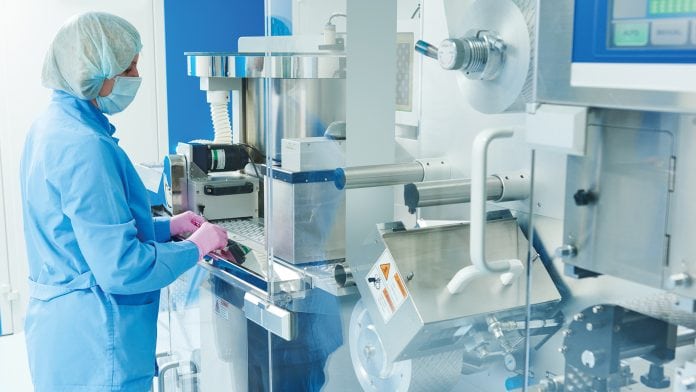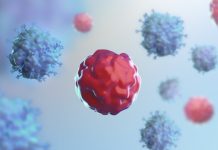
Adela Maghear outlines the dangers of pharmaceuticals in the environment and the measures needed to reduce their threat to human and environmental health.
Pharmaceutical pollution is a worldwide threat to humans and the environment. This is the key warning of the Safer Pharma campaign, a dedicated effort to encourage pharma companies to clean up their production, raise awareness among healthcare professionals of the impact of pharmaceuticals in the environment, and promote better medicine disposal practices amongst the public.
The campaign is co-ordinated by Health Care Without Harm (HCWH) Europe – a non-profit membership organisation working to transform the European healthcare sector into a global leader in environmental health and justice, and secure an ecologically sustainable, equitable and healthy future.
Here, the campaign’s Adela Maghear, pharmaceuticals policy officer at HCWH Europe, discusses the threat posed by pharmaceutical pollution, the importance of industrial leadership, and the role of the European Commission in safeguarding human and environmental health.
What dangers are associated with pharmaceuticals in the environment – to both human and environmental health?
Pharmaceutical pollution poses dangers to ecosystems and human health globally: pharmaceuticals enter the environment at all stages of their life-cycle (production, use, and disposal), meaning they can end up in our drinking water as well as accumulate in vegetables and fish. There is scientific evidence that even low concentrations of pharmaceuticals have harmful effects on animals and plants, and may also affect humans, as attested by two reports published by Deloitte for the European Commission (20131 and 20162).
In order to be effective, the active pharmaceutical ingredients (APIs) in drugs are designed to be biologically active and resistant to metabolic degradation, which means they persist and remain active in the environment as an unintended consequence.
APIs in the environment can cause reproductive failure, growth inhibition, and behavioural changes in organisms and even collapse populations. Several studies3 and documentaries4 have shown the devastating impacts of uncontrolled manufacturing discharges on water bodies, as well as on the people and animals who have come into contact with the resistant bacteria found in the environment.
Residues of diclofenac (an anti-inflammatory drug) cause renal failure in vultures feeding on carcasses of cattle treated with the drug; as a consequence, the vulture population in the Indian subcontinent declined by 80-99% between 2003-2004.5 The contraceptive drug ethinylestradiol can impair reproduction in fish population,6 and the antibiotics enrofloxacin and ciprofloxacin are proven to inhibit the growth of aquatic species such as cyanobacterium and duckweed.7
There is also evidence of increased antimicrobial resistance (AMR) and resistance genes being found in antibiotic manufacturing effluent in Europe.8
What role can healthcare professionals and patients play in reducing pharmaceutical pollution?
Unfortunately, the use of antibiotics and other pharmaceuticals is difficult to measure and reliable data is scarce, partly due to the varying environments in which they’re administered, including peoples’ homes and the variety of actors involved, i.e. healthcare professionals, patients and carers.
It is unacceptable that in some European countries it is still possible to obtain prescription drugs without much effort. Despite a European Union Council recommendation that antibiotics are used as prescription-only medicines in member states,9 it is believed that in some areas of Southern and Eastern Europe 20-30% of antibiotics consumed are non-prescription.10 Doctors and healthcare professionals have a moral responsibility to play a more proactive role in educating patients on the legitimate use of drugs. Irresponsible use and disposal (e.g. flushing pharmaceuticals down the toilet or sink) remains common, which fuels the exponentially increasing amounts of pharmaceutical residues entering the environment from outpatients.
Hospitals can take a lead in tackling pharmaceutical pollution from manufacturing by following simple steps such as including environmental criteria in their procurement decisions at hospital level and requiring manufacturers to disclose the source of their APIs and their post-manufacturing pollution control practices/policies.11 At the same time, healthcare professionals are well positioned to take the lead in educating patients about the environmental impact of the drugs they use.12
Is the pharmaceutical industry taking enough of a leadership role in efforts to reduce pharmaceuticals in the environment?
Industry must accept responsibility for their pharmaceutical pollution; the recent joint declaration on pharmaceuticals in the environment from the European Federation of Pharmaceutical Industries and Associations (EFPIA) opens with: ‘We confirm our commitment to take actions in the areas where we can make a difference in order to reduce the presence of pharmaceuticals in the environment.’13
Representing 40 pharmaceutical companies and 33 national associations, EFPIA has declared that they will take action where they ‘can make a difference’, yet they only refer to disposal – shifting the responsibility to patients. This industry-led declaration is a smokescreen that unfairly puts the onus on patients by only focusing on one pathway: disposal. This moves focus away from the fact that pharmaceutical companies should be cleaning up their own production and supply chains and investing in biodegradable pharmaceuticals (two pathways that they should take responsibility for). Solely focusing on one pathway, as the EFPIA declaration suggests, will not ensure long-term protection of the environment – it will not sufficiently reduce the amount of pharmaceuticals entering the environment.
The European Commission’s 2017 Action Plan Against AMR failed to adequately consider the environmental implications – with this in mind, what are your hopes for the long-awaited strategic approach to pharmaceuticals in the environment?
At the EU level, pharmaceuticals in the environment are mainly addressed in legislation on veterinary medicinal products and are not fully tackled in legislation on medicinal products for human use. The European Commission’s long awaited strategic approach on pharmaceuticals in the environment is meant to cover this legislative gap, but it is increasingly unclear if this long overdue approach (initially due in September 2015) will be published under the current commission.
European policymakers must align policies and tackle pharmaceuticals in the environment and antimicrobial resistance and provide comprehensive data collection for all antibiotics used in human medicine as well as for veterinary purposes. Such data should then be accessible to the public with assurances that Environmental Risk Assessment (ERA) results are systematically considered in risk-benefit analyses of marketing authorisation decisions for new human medicinal products. ERAs should also be made compulsory for products of human use put on the market before 2006.
It is unimaginable that a ‘One Health’ action plan from the European Commission does not place limits on pharmaceutical discharges into the environment or include environmental criteria for Good Manufacturing Practice (GMP). Omitting these points undermines the European Commission’s plan, rendering it ineffectual.
HCWH Europe has been working to tackle pharmaceuticals in the environment for the past six years: supporting their safe production, management, and disposal, whilst reducing negative impacts upon environment and health impact throughout their life-cycle. We also aim to foster innovations for green products as part of the only EU-wide campaign dealing with the presence of pharmaceuticals in the environment: Safer Pharma.
Do you believe there has been a lack of commitment from EU policymakers to address the issue?
There is a lack of commitment from EU policymakers to address this issue, mostly due to the intense lobbying of industry against introducing environmental criteria in the GMP. It is very concerning that key elements of the EU’s strategic approach to pharmaceuticals in the environment had been ‘diluted or deleted’.14 Bending to vested interests, expressed by the industry who spend vast amounts of money lobbying the European Commission, money that could have otherwise been invested in improving our health and protecting our environment. We don’t see any reason for the European Commission not to present a strategic approach that includes high-level protective measures on pharmaceutical pollution and AMR; in spite of the knowledge gaps, a precautionary approach should be the priority to safeguard human and environmental health.
What progress has been made since the launch of the Safer Pharma campaign and what are its priorities looking to the remainder of the year?
The main objective of the Safer Pharma campaign is to make the EU the first region to legislate on pharmaceutical pollution; we seek to achieve this through raising awareness amongst health professionals about their leading role in tackling this issue. The European Commission finally published a roadmap on pharmaceuticals in the environment in May 2017, largely thanks to the pressure that HCWH Europe exerted via its Safer Pharma campaign. In June 2018, the EC finally decided to add 17 alpha-ethinylestradiol (EE2) and 17 beta- estradiol (E2) and some antibiotics (e.g. macrolide antibiotics, amoxicillin, ciprofloxacin) on the watch list of substances for union-wide monitoring.15
The European Commission is finally starting to address pharmaceuticals in the environment and have published their public consultation (that ended in February 2018). HCWH Europe responded to this consultation, emphasising the most important measures to be included in their long-outstanding strategic approach. A recent key action of Safer Pharma campaign was to call for support from EU citizens in supporting our response to this consultation as well as encouraging them to send their own feedback to the European Commission. HCWH Europe advocates that the recommendations of the Safer Pharma campaign will be included in the strategic approach through meetings and communications with important stakeholders involved in the process e.g. commissioners, and policymakers from departments involved in the process (e.g. DG Environment and DG Health).
After the strategic approach is released, HCWH Europe will continue at the national level of EU member states, advocating for the implementation of measures proposed within the approach, and raising awareness amongst policymakers and the healthcare sector on their roles in tackling pharmaceutical pollution and AMR.
According to Article 8c of Directive 2013/39/EU,16 the European Commission should have proposed the strategic approach to address the pharmaceutical pollution of water by 13 September 2015. Three years later, the commission is still not convinced of the emergent necessity of having this approach in place.
References
- https://ec.europa.eu/health/sites/health/files/files/environment/study_environment.pdf
- https://ec.europa.eu/info/sites/info/files/study_report_public_consultation_pharmaceuticals_environment.pdf
- Changing Markets (2016) Impacts of pharmaceutical pollution on communities and environment in India. Larsson J, de Pedro C, Paxeus N (2007) Effluent from drug manufacturers contains extremely high levels of pharmaceuticals, in Journal of Hazardous Materials, 148
Larsson J (2014) Pollution from drug manufacturing: review and perspectives, in Philosophical Transactions of the Royal Society B: Biological Sciences, 369
Lübbert C, Baars C, Dayakar A et al. (2017) Environmental pollution with antimicrobial agents from bulk drug manufacturing industries in Hyderabad, South India, is associated with dissemination of extended-spectrum beta-lactamase and carbapenemase-producing pathogens, in Infection, 45(4) - Zembla (2018) The real price of cheap medicine https://zembla.bnnvara.nl/nieuws/the-real-price-of-cheap-medicine
Norddeutsche Rundfunk (NDR) (2018) Auf der Spur der Superkeime https://www.ndr.de/nachrichten/niedersachsen/Gefaehrliche-Keime-in-Baechen-Fluessen-und-Seen,keime302.html - http://journals.plos.org/plosbiology/article?id=10.1371/journal.pbio.0040066
- www.ncbi.nlm.nih.gov/pmc/articles/PMC1253666/
- https://www.ncbi.nlm.nih.gov/pubmed/21919043
- Gonzalez-Plaza J, Simatovic A, Milakovic M et al. (2018) Functional repertoire of antibiotic resistance genes in antibiotic manufacturing effluents and receiving freshwater sediments, in Frontiers in Microbiology
- Council Recommendation of 15 November 2001 on the prudent use of antimicrobial agents in human medicine (2002/77/EC).
- Morgan DJ, Okeke IN, Laxmanirayan R et al. (2011). Non-prescription antimicrobial use worldwide: a systematic review. The Lancet Infectious Diseases, 11, 9, 692-701.
The Review on Antimicrobial Resistance Chaired by Jim O’Neill (2016). Tackling Drug-Resistant Infections Globally: Final Report And Recommendations. - https://noharm-europe.org/sites/default/files/documents-files/4560/HCWHEurope_AMR_Factsheet_Dec2016.pdf
- https://noharm-europe.org/sites/default/files/documents-files/3026/HCWH%20Europe%20-%20%20Pharma%20Leaflet%20for%20Doctors.pdf
- https://www.efpia.eu/news-events/the-efpia-view/statements-press-releases/10042018-joint-declaration-on-pharmaceuticals-in-the-environment/
- www.theguardian.com/environment/2018/jun/01/
antibiotic-apocalypse-eu-scraps-plans-to-tackle-drug-pollution-despite-fears-of-rising-resistance - https://eur-lex.europa.eu/legal-content/EN/TXT/?uri=CELEX%3A32018D0840
- Directive 2013/39/EU of the European Parliament and of the Council of 12 August 2013
Adela Maghear
Pharmaceuticals Policy Officer
Health Care Without Harm Europe
https://noharm-europe.org/
http://saferpharma.org/
This article will appear in issue 6 of Health Europa Quarterly, which will be published in August.








